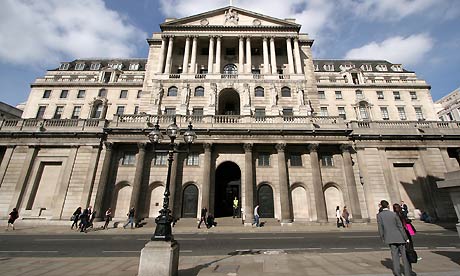To many of us, we see banks as a necessity; like schools, transport or food shops. They’re part of the familiar infrastructure of modern capitalism, and we would struggle to function normally without them. Yet did you know that as many as 1.7 billion adults remain unbanked—without an account at a financial institution or through a mobile money provider? This means that a large global population has nowhere safe to store their money but instead hide their savings underneath their pillows or mattresses, with no opportunity for its value to grow. The unbanked are also unable to access loans to grow their businesses or meet personal needs because they lack the formal records and credibility that lenders require.
Many of them are working in agriculture or informal sectors of the economy and the women in these countries are especially disadvantaged. The majority are unable to become financially included because of a few reasons; They lack education and credit history record, they do not have banks nearby, they are not able to complete the paperwork or simply because they are not aware of the services available.
Research shows that people who do not have access to financial services are much less likely to save and are therefore less likely to have the resources to keep their children healthy, safe and in school, especially when unforeseen events impact their lives. This further perpetuates the poverty cycle. So why is it that financial exclusion is prevalent despite the sheer size of the banking industry? What value do banks provide in the economy and society? Why do we need them?
Primary functions of banks
In this article, we will discuss the purpose of banks, their primary functions and the value they can bring to the communities they work with. To begin, we shall ask the question of what are banks for?
The answer you get to this question will depend on who you’re asking, but fundamentally a bank is somewhere safe to keep your money, and an institution that will lend you money when you need it, so it’s about pots of money (positive or negative). Further, it provides the ability to transfer value from one pot of money to another (payments). To some, it’s an advisor, a portfolio manager, a market maker, trader or broker and we’ll briefly cover these disciplines and the major emerging disruption below.

Of course, you’re not just giving the bank wads of cash to sit in a vault with a big round iron door; the bank can use your money to create “new” money in the shape of loans, and take a profit from lending, whether as a mortgage, or trade finance, or other types of credit. It may also use it to buy bonds and equities, either on behalf of customers or on their own behalf (proprietary trading). Lending and trading activities both carry risks, and these are mitigated by capital reserves (your money), the bank’s strategy (hedging), internal risk controls (customer due diligence, credit and market risk) and by regulatory limits to what banks and in particular, trading divisions, are allowed to do.
Since 2008, in addition to fulfilling risk compliance obligations, banks are required to keep a balance of cash in reserve to offset the risk of lending (fractional reserve), an amount which varies from country to country and bank to bank, depending on their risk profile and the regulator’s risk appetite, to hedge against potential market collapses, so there’s an inbuilt inefficiency in the way that money is used – this figure is around 10% or more of the amount a bank can lend in most jurisdictions. Banks also build credit risk into their profit model, so that all borrowers are paying extra for the borrowers who won’t be able to, or choose not to, pay back their loan as well as for the complex risk management systems and liquidity balances.
So far, so inefficient. Managing that credit risk also requires banks to do very thorough customer due diligence (we’ll get onto regulators in a moment) to ensure they’re not lending to people who are unlikely to pay lent money back, as that would push the risk profile, and the cost of lending, up. That means there’s a high barrier to entry for customers, who have to prove lots of things about their history and who they are before they can be given a loan. They also usually need to provide some additional security in the form of guarantees or collateral, of which the most obvious example is a mortgage. This high bar to entry means that many people can’t get a bank account at all, even if they don’t want to borrow any money, so we’re also excluding a significant chunk of the world’s population. This is important because those people are not able to access credit, which in the case of small producers and merchants, is the most important thing they need to climb out of poverty.
Then there are the regulations. Because banks are so big and so important to how the system works, to guarantee our safety, governments have mandated stringent regulations via Financial Services Authorities, Central Banks and other regulatory bodies. These regulations control restrictions such as the capital reserve ratio mentioned above, who banks are allowed to lend to (more customer due diligence) and on top of that, how well they’re managing their businesses and their risk profiles. All of this is critical while banks are the custodians of our cash, and especially in the light of 2008 and more recent high-profile failures, but again it means that running a bank is both costly and extremely complicated. Guess who pays for it?

The logic behind bank system
Alongside money markets and capital markets trading, many also offer corporate finance, or the issuance of equities and bonds, which are then traded on the secondary markets, either for clients or on the bank’s own behalf; as we saw vividly in the financial crisis, these secondary markets including derivative products such as the mortgage-backed securities of 2008 fame, can be a source of significant losses, as well as significant profits. In order to support these complex markets, banks have specialist divisions of advisors, analysts, product and market specialists, all of whom are paid well to use their significant expertise in advising companies and governments on issuance, or predicting market movements and creating products attractive to investors. Basically, it’s very sophisticated betting.
Several important factors are behind the system:
Size = Security. Everyone is familiar with “too big to fail”, but even at the smaller end of banking, regulations require institutions to have significant, diversified backing, to guarantee security. Maintenance of balances is further guaranteed by capital ratios, as described above. Higher barriers to entry apply to banks issuing or trading on capital markets so the number of banks able to support an issuance is relatively low.
Regulation = Security. Customers have guarantees that regulated institutions will be meeting the standards expected of them, or face censure if they don’t. While there continue to be scandals of various sorts which receive wide exposure, in reality the reliability and security of banks is extremely good.
Guarantee of identity – banks historically have been the primary means to guaranteeing many critical aspects of our identity, such as our credit-worthiness, and in many cases, guarantees of who we are. Being unbanked restricts access not just to banking accounts, but a whole range of financial services, accommodation and even jobs, because these checks cannot be performed.
Financial Products: the most familiar of these are the current (or checking to the US customer) account, the loan including the mortgage and payments. Key to this is maintenance of guarantees against what you put in and what you get out, whether that’s instant access to your cash via an ATM, electronic transfers, etc associated with current accounts, fixed rates associated with mortgages or loans, or fixed interest associated with deposits; all of these products come with inbuilt guarantees, so you know what you will be getting. This is further underwritten by central banks and regulation, so you can trust that you’ll get what you’ve been promised. We go into more detail on financial products and their alternatives in the service analysis below.
Monopoly on Access to certain facilities, such as central bank currencies, payments, transfers, etc. While alternatives are emerging, the vast majority of transactions are constrained to run over central infrastructure between banks because they a) require the funds to originate from and end up in recognised, secure, validated accounts, b) use recognised currencies, which are backed by central bank ledgers, to which the banks have access but ordinary companies and customers don’t, c) have authorisation and the infrastructure to pass payments over centrally managed payments transmission systems.
Familiarity: what’s known as the “power of inertia” describes a negative type of customer loyalty, which is based on two psychological phenomena – one, familiarity bias, or the underlying assumption that the thing you know is automatically better than unknown things, which helps to build society, but is unhelpful when you’re trying to make a reasoned judgement between competing products; the second is the disproportionate perceived effort vs actual effort of actually changing. When Current Account Switching came into the regulations in 2012, governments and banks assumed mass exodus would follow, but in fact not that many people did switch at the time.

Conclusion
Bank is more than just a vessel where one puts his or her money in to generate even more money. It can provide its customers the identity, accessibility and, of course, a sense of security that they need. Unfortunately, not all of these benefits are available for everyone. However, all of this is changing. The financial landscape is constantly evolving and so are customer’s behaviours. The barriers around financial services companies are crumbling.
CARE is one of the many organisations that has set out to break down this unfair barrier and expand economic opportunity for the disadvantaged. It has promoted Village Savings and Loan Associations (VSLAs) for over 25 years to enable women living in poverty to increase their financial skills, gain access to and control over resources, and generate economic opportunities and income. In partnership with CARE, hiveonline is developing the e-Arziki application which is a key enabler to VSLA digitalisation. With this tool, the women with be able to gain access to financial inclusion through credit history backed by blockchain. Check out our community finance page here to learn more.
Interested to read more about financial inclusion? Get the FinTech Revolution: Universal Inclusion in the New Financial Ecosystem book available on Amazon.